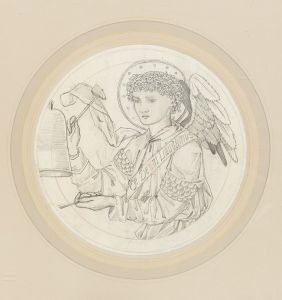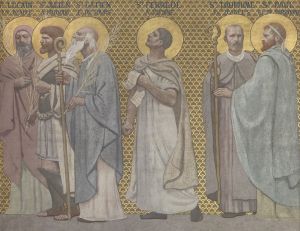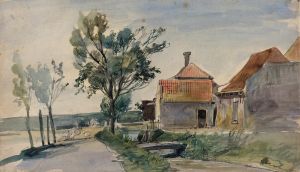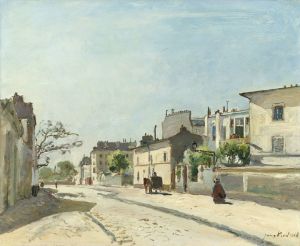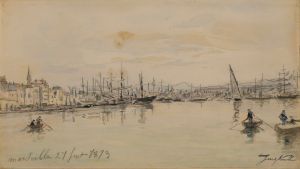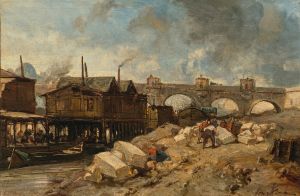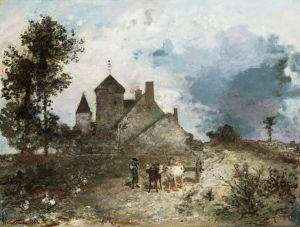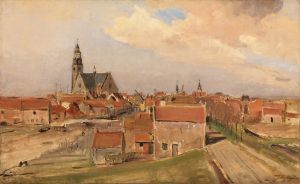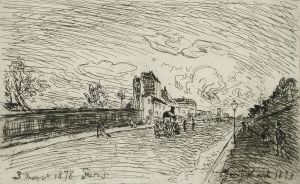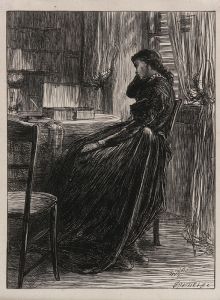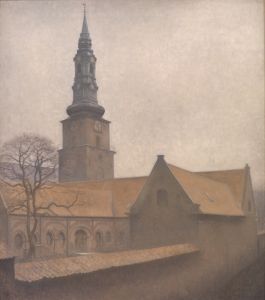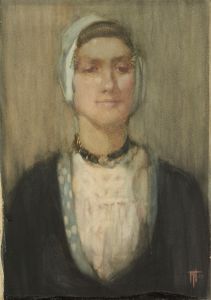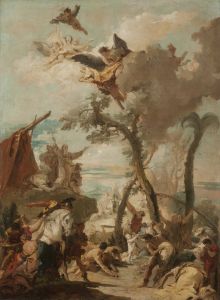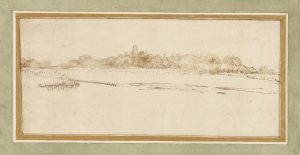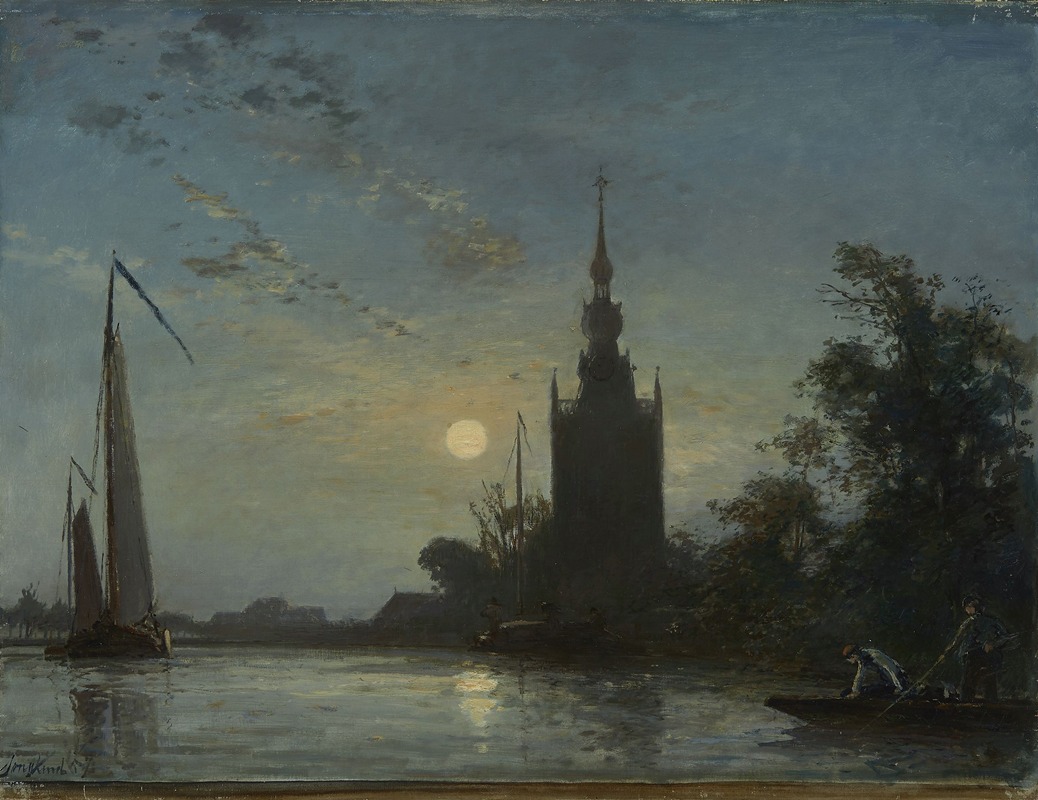
L’Eglise d’Overschie
A hand-painted replica of Johan Barthold Jongkind’s masterpiece L’Eglise d’Overschie, meticulously crafted by professional artists to capture the true essence of the original. Each piece is created with museum-quality canvas and rare mineral pigments, carefully painted by experienced artists with delicate brushstrokes and rich, layered colors to perfectly recreate the texture of the original artwork. Unlike machine-printed reproductions, this hand-painted version brings the painting to life, infused with the artist’s emotions and skill in every stroke. Whether for personal collection or home decoration, it instantly elevates the artistic atmosphere of any space.
Johan Barthold Jongkind was a Dutch painter known for his landscape paintings and his influence on the Impressionist movement. One of his notable works is "L’Eglise d’Overschie," which translates to "The Church of Overschie." This painting captures the church located in Overschie, a district in Rotterdam, Netherlands. Jongkind's work is celebrated for its innovative use of light and color, which would later inspire Impressionist artists such as Claude Monet.
Jongkind was born in 1819 in the Netherlands and studied at the Academy of Fine Arts in The Hague. He later moved to Paris, where he became associated with the Barbizon School, a group of painters who were precursors to the Impressionists. Jongkind's style evolved during his time in France, where he developed a keen interest in capturing the effects of light and atmosphere in his landscapes.
"L’Eglise d’Overschie" exemplifies Jongkind's ability to depict natural light and its impact on the environment. The painting showcases the church in Overschie, set against a serene landscape. Jongkind's brushwork is characterized by loose, fluid strokes that convey a sense of movement and immediacy. His use of color is subtle yet effective, with a palette that captures the natural hues of the Dutch countryside.
Jongkind's approach to painting was innovative for his time. He often painted en plein air, or outdoors, which allowed him to observe and capture the changing effects of light and weather on the landscape. This technique was a departure from the traditional studio-based approach to painting and was a significant influence on the Impressionists, who would adopt and expand upon this method.
The composition of "L’Eglise d’Overschie" reflects Jongkind's interest in the interplay between architecture and nature. The church is depicted with a sense of solidity and permanence, while the surrounding landscape is rendered with a softer, more transient quality. This contrast highlights Jongkind's skill in balancing different elements within a composition.
Jongkind's work was well-received during his lifetime, and he exhibited regularly in Paris and the Netherlands. His paintings were admired for their freshness and vitality, and he gained a reputation as a master of landscape painting. Despite facing financial difficulties and periods of personal struggle, Jongkind continued to paint throughout his life, leaving behind a significant body of work that continues to be celebrated today.
"L’Eglise d’Overschie" is a testament to Jongkind's artistic vision and his contribution to the development of modern landscape painting. His ability to capture the essence of a scene with economy and precision has earned him a lasting place in the history of art. The painting remains an important example of Jongkind's work and serves as a reminder of his influence on the Impressionist movement and beyond.





